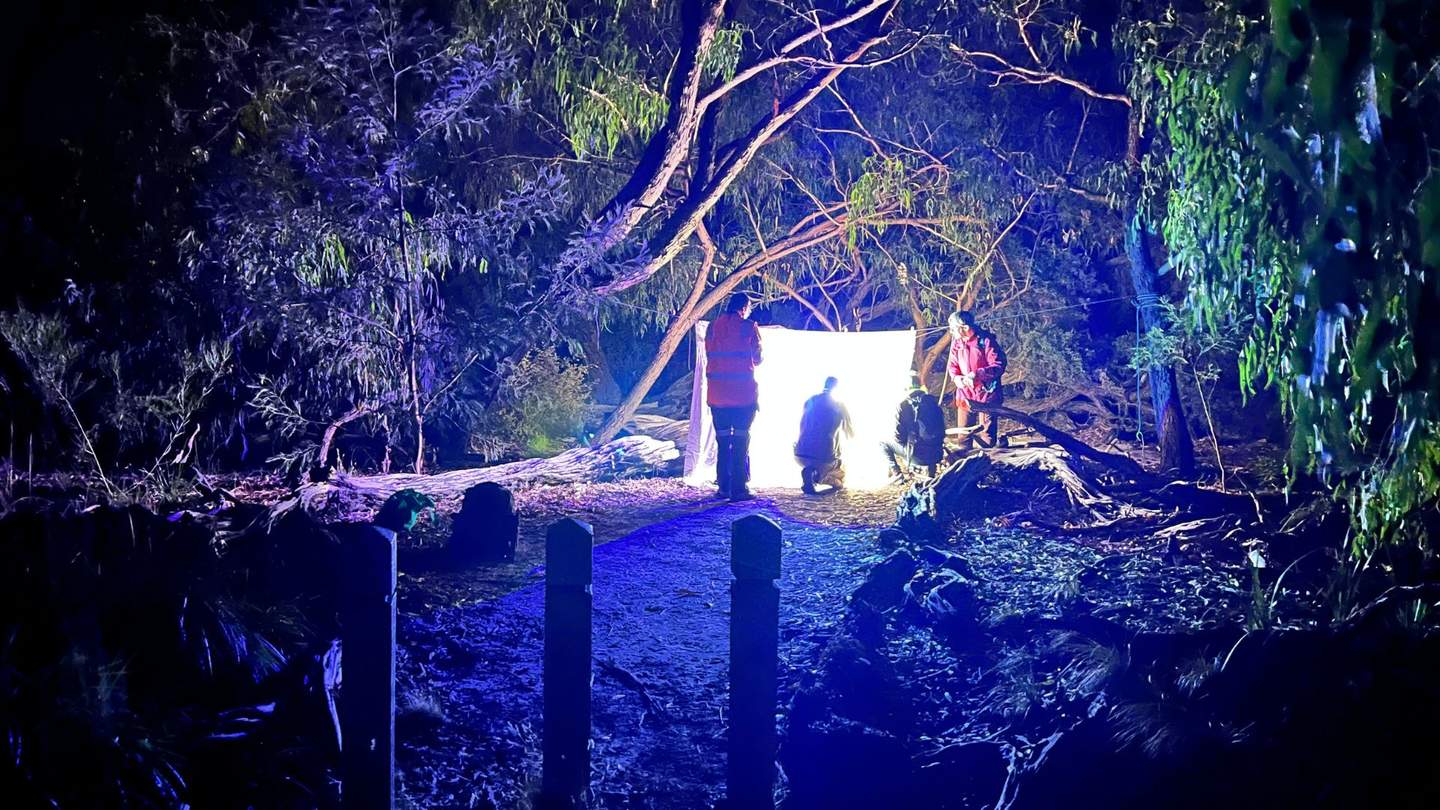The following article is taken from the Banksia Bulletin – Winter 2023 edition.
Words by Belinda Raymond, Citywide Bushland Crew
Photos by Pauline Reynolds and Belinda Raymond
A buzz in the air at George Street Reserve, Sandringham 🐜🦋

Holding evenings to investigate insects is a great way to understand the level of biodiversity in Bayside. As land managers, we have a great understanding of the diversity in the Plantae kingdom (all the plants), yet insects can drive their production. As they feed on flower nectar, insects also pollinate plants helping to seed production and the growing of fruit and vegetables.
Insects are great at decomposing organic matter and breaking down nutrients in the soil, which feeds the plants. Lepidoptera is one of the largest insect orders comprising all moth and butterfly species. A survey of this insect group in a relatively short amount of time can give a good indication of biodiversity within any ecosystem. It is for this reason that we use these species as an ‘indicator taxon’, as its decline could significantly impact the overall biodiversity of any site.
How do we survey such a group of insects?
We set up a light trap, preferably on a warm night, with a white sheet and light source. Using this method we don’t need to collect the insects as they are attracted to the light; we simply observe and document them with a camera. On this particular night, we set up two sheets, one with a 250w globe and the other with a small, manufactured globe that emits UV radiation, corresponding with the sensitivity peaks of most nocturnal insects. The insect survey was a great success, documenting a mix of 65 species, comprising mostly of moths but also flies, ants, wasps, lacewings and mosquitos.
Take a look at the survey findings in iNaturalist








